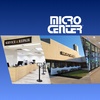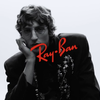{shortcode-cf219dbf51879a7d3f1afa588859bf4c9317dfc8}
Pontus Lidberg, an artist-in-residence at Harvard Medical School, is a dancer, filmmaker, and creative who has traveled around the world spreading his choreography and expertise as a performer.
Lidberg — originally from Stockholm, Sweden — notes that his introduction to the arts world began early.
“When I first saw a dance performance, I told my parents I wanted to do that,” Lidberg said in an interview with The Crimson. “I mean, I was only four years old.”
From that point on, Lidberg began to formally study dance, eventually focusing on classical ballet.
When Lidberg was 10, he auditioned for the Royal Ballet School in Stockholm, noting that this was when “the real education started.”
“That’s like nine years of vocational training to become a professional ballet dancer,” said Lidberg.
In his 20s, Lidberg became interested in pursuing a new avenue besides dance: medicine.
“Even though I was at the beginning of a career as a professional dancer, I had already done a lot, and I didn’t really see where this was going,” said Lidberg.
Lidberg describes his medical experience as some of “the best years” of his life, which pushed him to create choreography in his free time while in medical school.
“I loved every minute of it,” said Lidberg. “That didn't mean I wanted to stop my artistic practice. So during the same time, I started making my own work.”
Lidberg’s choreography brought him offers for projects worldwide, which culminated in his decision to leave medical school and fully pursue his creative career.
Since pursuing choreography and dance full-time, Lidberg has worked with organizations all around the world, from the New York City Ballet and the Paris Opera Ballet to the Vietnam National Opera and Ballet in Hanoi. His work has also allowed him to work with the U.S. Library of Congress on projects for the Library’s 90th anniversary.
Lidberg utilizes more than dance and choreography in his works — he’s also a filmmaker. After gaining an interest in photography, Lidberg began to utilize the camera as a tool to tell stories through dance.
“I was still in medical school when I did my first dance film,” said Lidberg. “And that’s what it was to begin with. It was really dance on camera.”
He described this as his default, since he was often trusted to put together dance and photography. However, he began to fall more into the narrative and storytelling of film itself.
And, at a certain point, he realized he really enjoyed the storytelling that came with film and began to center his work around film.
In his current position, Lidberg is studying and researching how individuals communicate about medicine, health, disease, and death, allowing him to explore ideas to incorporate into his art.
“One of them is a film idea which takes place during the peak of the AIDS epidemic in the early 90s,” said Lidberg. “And I was interested in telling a story about a disease that, at the time, didn’t have a cure and came with a lot of baggage attached to it.”
He also pursues projects relating to the relationship between aging and dance, especially because dance is an artform he describes as “youthful.”
“What stories [does] the aging dancer tell? And what place does the aging dancer have?” Lidberg said.
Collaborative work is one of Lidberg’s biggest passions. By observing the culture and direction of the group before diving into his choreography, he adapts his style to the dancers with whom he works.
“I’m more interested in the encounter with other artists and what comes out of that,” said Lidberg.
Lidberg is especially energized by working with those he knows well.
“That adds a layer of creativity that’s really rewarding, because it means I’m working with people I know so deeply that you can go further,” said Lidberg.
Looking to the future, Lidberg has many projects on the horizon, including a course he will teach this spring at Harvard on “embodied storytelling.”
“Embodied storytelling really is my work,” said Lidberg. “You know, it’s storytelling without words.”
Lidberg describes his experience at Harvard as the opportunity to learn and research more from a variety of individuals, which will contribute to the work he creates in the future.
“The gift of being here is really to expand my horizons,” said Lidberg.
—Staff writer Neeraja S. Kumar can be reached at neeraja.kumar@thecrimson.com. Follow her on X @neerajasrikumar.













